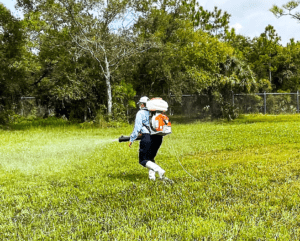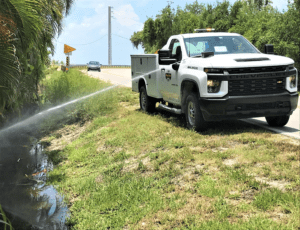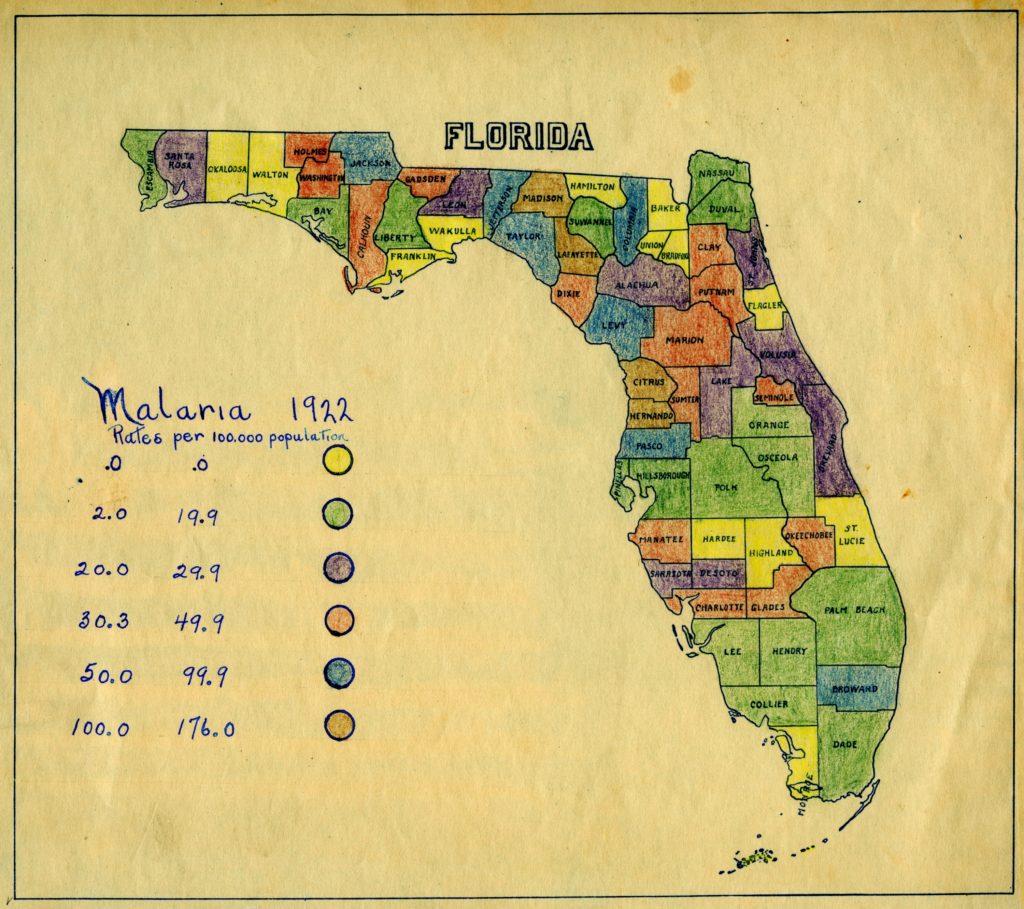Malaria cases put local mosquito control districts on alert

Southwest Florida made national news this week as the Centers for Disease Control and Prevention (CDC) reported four cases of locally acquired malaria in Sarasota County.
“We need to keep our eyes and ears open,” said Scott Schermerhorn, Charlotte County’s mosquito and aquatic control manager. Charlotte County has 21 sites along the Sarasota/Charlotte border where they are monitoring mosquitoes, doing extra surveillance. Countywide, there are 90 locations.
“We are planning to maintain regular treatments based on what we find in the traps,” said Schermerhorn.
Malaria is a disease many have forgotten about or believe has been mostly eradicated. Nevertheless, malaria kills millions of children worldwide, though it is treatable if caught early. And it is not the only disease carried by the mosquito. Dengue, chikungunya, yellow fever and Zika are some of the others.
While no malaria cases have been found in Lee or Charlotte counties, the news has given extra emphasis to the work of local mosquito offices, which were already busy with the advent of summer rains. The issue of the malaria being “locally acquired” means that the Sarasota cases came from actual Florida mosquitoes carrying the disease, as opposed to Floridians who import the disease home from overseas, where it is endemic.

The Sarasota cases were in the northern part of the county, near the Manatee line, at least 30 miles away. One question mark is the uncertainty about where the individual patients have been, as several individuals were reported among the homeless, Schermerhorn said.
Rare Cases in Florida
The CDC reported cases of Plasmodium vivax malaria on Monday, June 26, in northern Sarasota County. The last cases reported of locally acquired malaria in Florida had been in 2003, when officials reported eight cases of locally acquired Plasmodium vivax malaria in Palm Beach County.
The culprit in the case of malaria is the Aedes anopheles mosquito, but other varieties like Aedes aegypti can transmit dozens of viruses and yet have some resistance to spraying and are hard to find and thrive in urban areas.
“There are a number here capable of spreading viruses,” said Eric Jackson, the Lee County Mosquito District’s deputy director for public information. Jackson called the A.aegypti a “very cryptic mosquito” that hides in dark places. “That is why we rotate through the different products.”

It is the A.aegypti that has been targeted by the release of sterile males, not the A.anopheles.
There is no magic answer to the problem, and the danger of malaria and other mosquito-borne diseases comes at a heavy cost. The budget for Lee County alone is approximately $26 million, paid for by ad valorem property taxes that pay for the work of the district.
The Lee County Mosquito District for Boca Grande encompasses Captiva, Sanibel, Pine Island and Western Cape Coral. The northern part of Boca Grande is handled by Charlotte County.

Nationally, there are over 700 of these districts across the nation. The work of the district is daily, and not just in the summertime, though in the summer and rainy season, residents are seeing more mosquitoes.
“This time of year, we are often working weekends,” said Jackson. “You have to go out and find the larvae before they can become biting adults.”
The issues with mosquitoes are not just with the increase in the rains that come. The spring brings high tides, which mean temporary high saltwater pools.
“We have a huge issue with salt marsh mosquitoes,” said Jackson.
Both counties ask for residents to send in reports, especially when they notice big increases. Biologists and inspectors are out on the islands and in neighborhoods all the time, and this information helps.
What they can do in terms of spraying is bound by state regulations, and guidelines cover what happens when certain numbers of mosquitoes are found. “We have to have just x of x type,” said Schermerhorn.

Because of the unique island geography of coastal Florida, Lee County and Charlotte County not only use trucks but spray by air. Lee County is truly on wartime footing with the insects, and owns and exclusively uses the former World War II base, Buckingham Airfield, as its air hub, sending out fixed-wing aircraft by night to kill adult mosquitoes. Included in its fleet are two DC-3s and a fleet of Airbus H125 helicopters. The helicopters can be used to reach island areas.
It does not take much to take out the mosquitoes. Charlotte County atomizes about 0.5 ounces of pesticide per acre, approximately a thumb-sized amount. The insecticide is pyrethrin, found in chrysanthemum flowers, and it is used to control not only mosquitoes but fleas, flies, moths and other pests as well.
Multiple Disease Carriers
Dr. Eva Buckner, assistant professor of medical entomology at the University of Florida Entomology and Nematology Department in Vero Beach, said that prior to the 1950s, malaria was a large public health issue in the U.S., but it is now considered eliminated. That does not mean the risk is gone.
“We always have the possibility of having malaria cases as well as cases of other mosquito-borne viruses,” said Buckner. Year in and year out, West Nile virus, St. Louis encephalitis and Eastern equine encephalitis are more common and always going to be present in the environment, she said.
Mosquito control programs after World War II helped to gain some control over the issue, as the state has over 90 types of mosquitoes. She said that on the West Coast and in our area, the saltwater mosquitoes can be the “super huge annoyance.”

She said that our area of the state has “awesome mosquito control programs,” and residents should work closely with them in site visits. Should they see a problem, such as a neighbor who is out of state and has a green pool, developing that relationship is key. The benefit of a mosquito district is that it means staff are not also the animal control and dog catcher and can focus on the problem.
“A well-funded mosquito district is able to do a lot more than a county program,” said Buckner.
Looking out for your immediate neighborhood is important, as Buckner said the dangerous A.aegypti is “not a species that flies very far.”
Prevention First
What puts malaria (mostly) in the past is that our own habits and lifestyles mostly protect us from it.
“We have AC,” said Jackson. “We have screens.”
But no matter what the department does, the best advice at this time, and any time, is practical and often forgotten. Dog walks at dawn and dusk are unfortunately problematic, so use repellent, long sleeves and no flip-flops. And check your yard after every rain.
“It’s very easy to not think about what’s capable of growing the mosquitoes in the front yard,” said Jackson. “Often there are mosquitoes growing in pots, even palm fronds filled with water.”
Tip everything over.
“Even bromeliads,” said Jackson. “They are growing the mosquitoes.”









